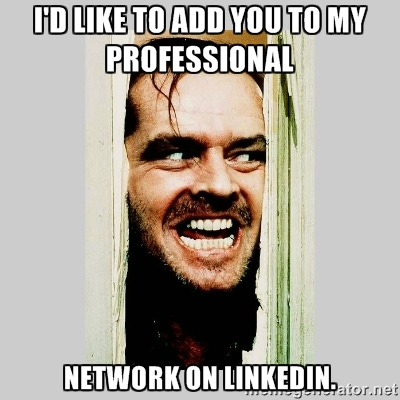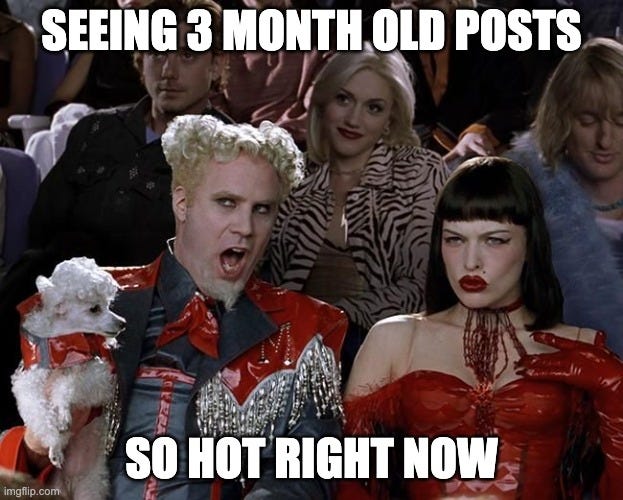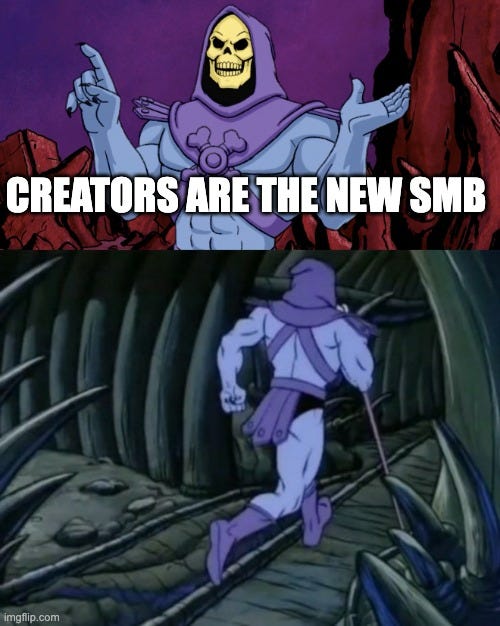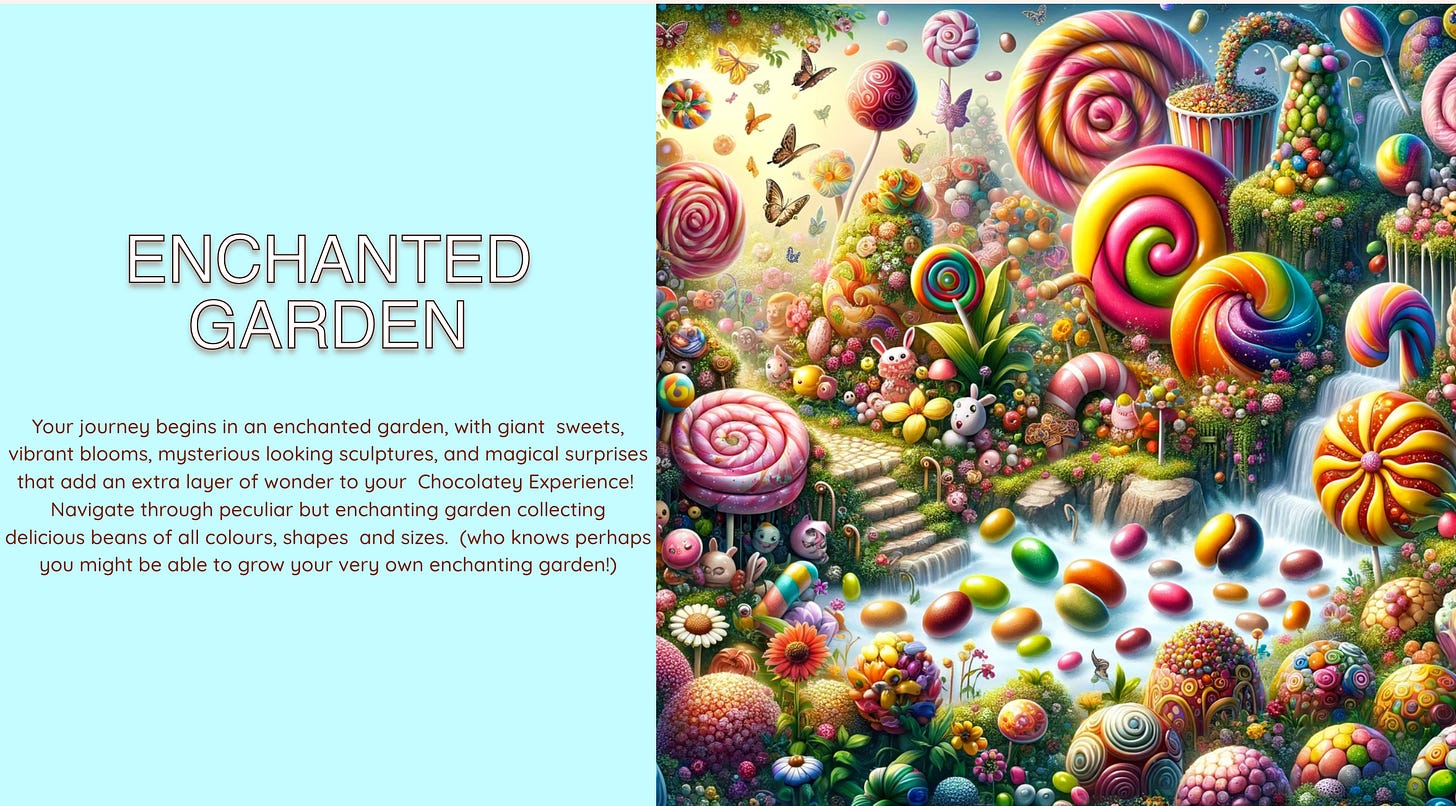🎢 LinkedIn doesn't want you to go viral
Why clickbait won't work
Hello, readers.
In today’s newsletter:
Why is LinkedIn showing you a post from 3 months ago?
New finance and technology tools help creators operate as businesses.
AI generated marketing can mislead consumers.
Know someone who would benefit from this content? Share it with them!
Your LinkedIn posts could now live on forever.
As long as they’re useful.
LinkedIn is updating its content distribution algorithm in an attempt to stamp out virality and promote relevant knowledge and advice.
The company’s mission is to "connect the world's professionals to economic opportunity." To achieve this mission, LinkedIn wants its platform to be a repository of professional knowledge. It wants to match that knowledge with people whenever they might need it. 1
That means helping users connect to the few people in their industry who can make a meaningful difference instead of reaching the largest number of other professionals on the platform.
To do this, LinkedIn is testing a new feature, “suggested posts,” where relevant posts are surfaced to users regardless of when they were published.
This means a post could be served up months or years after it was originally posted if a user shows an interest in the post’s topic.
The bet is that suggested posts will encourage users to share useful content over clickbait content.
This means users on LinkedIn might see their content get less reach in the short-term for the trade off of targeted reach in the long-term.
How is LinkedIn making these changes?
With AI, of course.
The platform uses AI to share content at scale and its trained with the guidance of LinkedIn’s global editorial team to understand what content is most relevant to users.
Part of this push to get professionals sharing their knowledge also includes expanding LinkedIn’s newsletter product. Today, its newsletter offering lacks a lot of the features found on platforms like ConvertKit and Substack, but it plans to improve this and compete directly in the space.2
How much is good content worth?
It turns out this is something creators don’t even know.
Karat Financial, a company offering credit cards for content creators, is changing this with Karat Insights, a tool for creators to see anonymized financials from their peers.
Karat Insights’ data comes from thousands of creators who’ve connected their bank accounts directly to Karat’s services, like bookkeeping and tax prep, providing data on how much they’re earning and from where.
Insights was built to give creators transparency into their own income and also see how they compare to others on YouTube, Twitch, Instagram, and TikTok.
So far the tool is helpful in establishing benchmarks on what creators are earning across platforms. For example, creators with one million followers earn:
~$500k/year on Twitch.
~$90k/year from AdSense on YouTube.
~$500/year from the Creator Fund on TikTok.
This data is valuable for creators who need more transparency into how much they could be making in an industry where payments from platform and brands can vary.
Products like these are part of a larger trend of recognizing creators as businesses who need tools and technology to help them scale.
We see this trend reflected in venture capital where companies supporting the creator economy are receiving venture funding.
KLIQ, a no-code platform for creators launching branded apps and educational courses raised €1.4 million in a funding round led by Serena Williams’ venture fund.
According to Serena, “KLIQ is on a mission to redefine how we perceive creators as the backbone of the next generation of small and medium-sized businesses.”3
Visa is also recognizing creators as businesses and is working with 500 creators on a social media video series called “GetP@id.”
The series features interviews with creators who share tips on growing your personal brand and generating income. Visa sees creators as essential for marketing to other creators and servicing their financial needs.4
Expect to see more businesses serving the unique needs of creators as solopreneurs and small businesses.5
When AI generated marketing goes wrong
If it’s too good to be true, it probably is.
Willy’s Chocolate Experience in Glasgow, Scotland, promised an enchanted garden with giant sweets and magical surprises at ~$45/ticket. The website for the experience included AI generated art like this to promote the event:
The marketing was totally misleading and complaints led the cops to show up and the event closed soon after opening.6 The event actually looked like an abandoned warehouse:
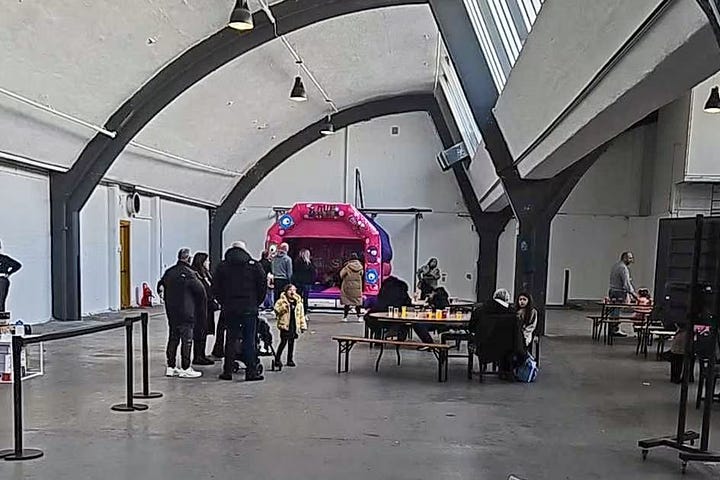

The organizer, House of Illuminati, blamed the not-so-enchanting experience on a series of last-minute issues and will be giving full refunds to people who purchased tickets.
AI generation not only played a role in the event’s marketing, but in it’s production as well. Actors hired for the event were given scripts that appeared AI-generated because of the script’s unnatural wording.
As more business start using AI for marketing and production, the burden falls on consumers to decide if what they are being sold is actually real.
This is especially true of online video as deepfakes become more common. Andrew Huberman recently sued a supplement brand for running AI-generated video ads that made it look like he endorsed the brand’s supplements.7
AI generation has so much potential for helping people create content without big budgets. But resistance to using AI in marketing is understandable when companies use it as a shortcut for creating premium experiences and scamming people out of money.
Platform Headlines
OnlyFans has paid $15B to creators since its launch in 2016, and now has more than 3M creators and 238M fans.8
Meta announced its performance bonus program would no longer have monthly payout caps. The invite-only program gives creators the opportunity to earn money on interactions on their public Facebook posts, excluding reels and Stories. Bonus payouts will be based on the amount of reach, reactions, shares and comments on eligible posts.9
Reddit is targeting $31 to $34 per share for its IPO, which would imply a valuation of as much as $6.5 billion.
TikTok is an official partner of the Cannes Film Festival. The platform will hold a competition for minute-long videos and send one grand prize recipient (of €10k), one top director, and one winning screenwriter to the festival.
YouTube’s video editing app, YouTube Create, is now available in 21 countries.
Did you enjoy today’s post?
Subscribe for more content like this about the creator economy.
https://www.linkedin.com/pulse/how-linkedin-focused-surfacing-right-content-worlds-tim-jurka-bvzhc
https://www.eu-startups.com/2024/02/london-based-kliq-gets-e1-4-million-to-shift-creators-from-content-generation-to-business-ownership/
https://www.theinformation.com/articles/visas-marketing-chief-on-the-creator-economy-gold-rush
https://www.nbcnews.com/tech/willy-wonka-inspired-chocolate-experience-outrage-rcna140726
https://www.ft.com/content/500b97c8-b88b-4da4-a1b9-0d3db01aeed7


